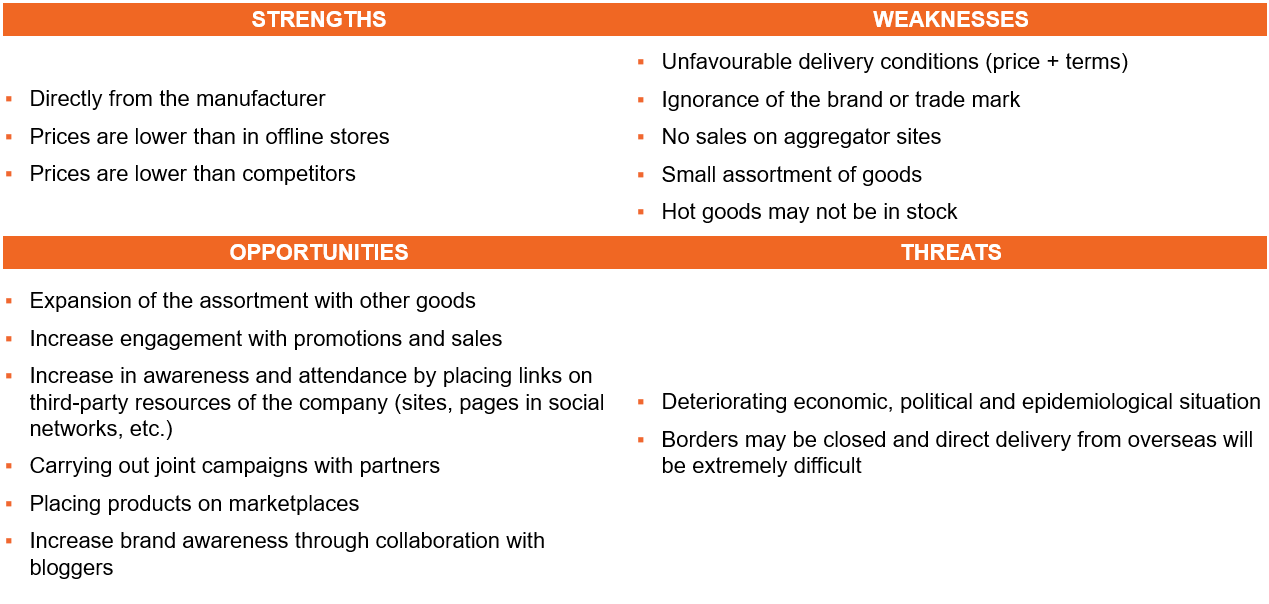Blog about successful marketing strategies in russia
Business Analysis: How to Analyze Market Trends and E-Commerce Niches


B2B MARKETING
Share this Post
No marketing can save your business if you are working in the falling market or your goods and services are in little demand.
- How do you distinguish a market decline from a seasonal decline in sales?
- What tools help monitor market dynamics?
- What key aspects should be focused on during the analysis?
- What approach allows for finding and analyzing competitors?
- How do you find out interest of Russian consumers in various niches and categories?
Business analysis must give a detailed answer to all these questions. In this article, RMAA Agency experts tell what tools let you find data on every item, as well as what conclusions the business analysis should make and how to draw them.
Market and niche analysis
Business analysis is performed general-to-specific. That is why, first of all, it is necessary to analyze market capacity and environment and to evaluate market tendencies. For this, most often, it is enough to use open sources such as marketing research reports of analyst companies and government statistics data (Russian Public Opinion Research Center (VTsIOM), Unified Interdepartmental Statistical Information System (EMISS)).
When selecting the sources, it is important to estimate their value in the market. To analyze the Russian market, it is best to particularly use reports of local research companies. Besides, pay attention to the profile of analyst companies: for instance, GfK conducts market research in various niches and industries, while DSM Group specifically focuses on research of the Russian pharmaceutical market, that is why it provides more detailed industry reports.
- If the data obtained is not enough, you can also involve other data sources:
- First-hand experience and personal observation, including one by means of 'mystery shoppers', analysis of feed from video cameras.
- Interviews with consumers, conversations with experts, roundtable discussions, conferences.
- Social media and forums where you can find or start a thread to discuss a product or a company.
- Corporate staff, especially people from distribution, shipping, and direct sales departments.
For businesses that develop sales in an online environment, it is important to pay special attention to the flow of demand for relevant categories and goods online. Wordstat Yandex and Google Trends will help with that. These tools let you monitor online demand for certain categories of goods and services and brands in every search system in real time for the last two years (Yandex) or since 2004 (Google). Here it is worth paying attention to the fact that Google Trends only show a level of interest to a topic as against the highest figure for a certain region and period, while Wordstat Yandex, in its turn, shows an exact number of queries for one or another key phrase.
As any market is an extremely dynamic ecosystem, it is important to constantly track its trends and up-to-date reports. In this regard, you can and should join newsletters, Telegram channels, and social media accounts of specialized analyst companies.
Competitor analysis
If you already have an operating business or are only going to launch a new project, it is important to know and keep track of your competitors' online activities. Competitor analysis lets operating online shops increase LTV (lifetime value) and Customer Retention Rate or, when starting a new project or promotion channel, avoid many mistakes and do better than your opponents.
Competitor analysis helps find out what attracts clients and offer a unique advantage, make value.
When analyzing the e-com field, we identify several types of competitors:
- online shops that sell similar goods;
- online shops that sell goods in the same category;
- online shops that have the same business model (for example, an official online store of a manufacturer).
How to find competitors
- Analytics services. For example, Serpstat lets you find competitors in search results and in context.
- Search queries. Just enter a query, by which users find your website, in a search box. Write out the resources that make the top of organic results and ads;
- Industry ratings. They can be found in reports of specialized analyst companies.
- Thematic events. Conferences, fairs, online events—look for competitors on the websites and social media pages of previous and upcoming industrial events.
What to analyze
Competitor analysis helps estimate the overall level of intrabranch competition, determine dominant companies in the market, find their advantages, and use the examples of their successful decisions and strategies.
What is essential to know about competitors:
- USP and market positioning. We can find it on their website or social media pages.
- Product range. You can evaluate how wider or narrower it is only through learning the catalogue of every competitor.
- Prices for similar goods/goods in the same categories. If the goods in your online shop cost roughly the same as your competitors' ones, you will unlikely manage to use it for communication to attract buyers. If, however, you see that the prices are much lower, use this factor when preparing a key message of your advertising campaigns.
- Demand for goods in the same category. For this purpose, use Wordstat Yandex and Google Trends.
- Delivery and payment terms. With a knowledge of cost, time and details of delivery, checkout process that every competitor has, you can optimize buying terms in your online store and make your competitive advantage out of it.
- Deals and special offers. Here it is important not only to be as good as your competitors, but also to find interesting solutions to attract new buyers and to form a pool of loyal, regular customers.
- Visitor dynamics in organic and context results right from the word go. Serpstat services can help you perform this analysis. Hit analysis allows for understanding how quickly the traffic of your own website can grow and what approximate number of visitors per month you can count on.
- Social media activity. There are many services to analyze social media accounts. You can use them or collect core data manually: on what social media your competitors are represented, what communication strategy they have and where their most active audience is and whether it is actually active.
- Marketing activities. SpyWords can help you learn advertising budgets (for context ads). You can spy on advertising creatives on social media using Ad Library - Facebook or tracking your feed after entering queries about competitors (as a rule, active ads of competitors 'run for' users themselves). Influencer integrations can be tracked by unique or brand tags of competitors.
We recommend updating competitor analysis at least once a year and, on top of that, estimate the number of new players, the market growth rate, dynamics of commodity lines and new goods in the industry. Such an analysis will let you evaluate density of competition, future expectations of its intensification and make market change forecasts for the next few years.
Conclusions and strategy
This is what will become a key business analysis section. After you learn the state of the market and everything about your competitors, it will be high time to make the most comprehensive and objective SWOT analysis of your business:
- strengths - evaluate the competitive advantage of your company and its market positioning;
- weaknesses - weak points of your business as opposed to your competitors;
- opportunities - describe all options for further development and promotion of your business that you have identified during the competitor analysis;
- threats - those changes in the market that may affect the development of your business.
An example of a SWOT analysis of an e-shop of a foreign manufacturer
Based on the conclusions reached and the analysis performed, main strategic areas for business development should be formed: these can be a change in positioning, product line expansions, new distribution channels etc.
How often do you need to update data?
Everything depends on dynamics intensity and seasonality in every particular niche. In general, the most extensive work is done at the stage of data collection for business analysis and drawing conclusions while you get a list of resources where you will be able to permanently keep track of market dynamics. Once done, we recommend following market data changes, update lists of competitors annually, and constantly monitor their marketing activities.
Join 2,000+
of your Peers!
You will be the first to know about Russian marketing insights, news and updates from our agency. Stay tuned!
Get our latest articles delivered to your email inbox and get our exclusive White Paper
"How to sell to Russian large companies?"
for FREE!
How to Sell to Russian Large Companies?
More about Russian b2b marketing

Ready to partner with the specialists in Russian marketing and advertising?
About the Author
Head of Digital, editor-in-chief of the RMAA Agency Blog
Join 2,000+ of your Peers!
Get our latest articles delivered to your email inbox and get our exclusive White Paper "How to sell to Russian large companies?" for FREE!
You will be the first to know about Russian marketing insights,
news and updates from our agency.
Stay tuned!
We're updating our website's design step by step, so some pages may look different. Thank you for your understanding.
Got it















